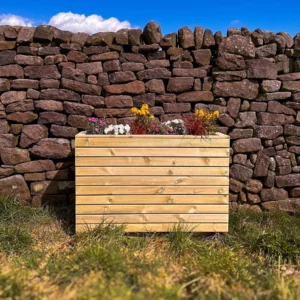Unveiling the Beauty: The Intricate Process of Crafting Engraved Wooden Watches

Crafting wooden watches is a fascinating blend of artistry, craftsmanship, and technical expertise. Each timepiece created from different tree species exhibits its individual beauty, character, and durability. Each watch being uniquely different, shows off its own wood accents and engraved wooden watches offer that extra personal touch.
In this detailed post, we will explore the skills involved in making wooden watches and delve into the intricacies of tree selection to create these exceptional timepieces.
Woodworking Skills
To embark on the journey of creating wooden watches, you must first develop a solid foundation in woodworking skills. This includes:
- Precision Cutting and Shaping: Mastering various hand and power tools such as saws, chisels, and sanders to accurately cut and shape the wooden components of the watch, including the case, bezel, and strap.
- Joinery Techniques: Acquiring expertise in joining different wooden parts seamlessly using techniques like dovetail, mortise and tenon, or box joints. These connections ensure structural integrity and longevity.
- Finishing and Polishing: Understanding the art of sanding, staining, and applying finishes to achieve a smooth, lustrous surface on the wooden components. This involves using lacquers, oils, or varnishes to protect the wood while enhancing its natural beauty.
Tree Selection: The choice of tree species significantly impacts the aesthetics and durability of wooden watches.
Here are a few popular options;
- Exotic Hardwoods: Selecting exotic hardwoods like ebony, rosewood, or zebrawood offers a luxurious appeal and unique grain patterns. These woods are known for their durability, strength, and resistance to moisture, making them ideal for watchmaking.
- Domestic Hardwoods: Various domestic hardwoods such as walnut, maple, or oak can be excellent choices for crafting wooden watches. They provide a warm and natural appearance and often exhibit distinct grain patterns, contributing to the individuality of each timepiece.
- Sustainable Alternatives: In recent years, sustainable alternatives like bamboo or reclaimed wood have gained popularity in watchmaking. These materials offer environmental benefits while adding an eco-friendly aspect to the craftsmanship.
Wood Stabilization Techniques
Wooden watches require additional steps to ensure longevity and resistance to moisture-related issues. Some essential stabilization techniques include:
- Drying: Properly drying the chosen wood species is crucial to prevent warping or cracking in the finished watch. Depending on the wood’s characteristics, kiln drying or air drying methods are commonly employed.
- Resin Stabilization: Some porous woods may benefit from resin stabilization, where the wood is impregnated with a resin-like epoxy. This strengthens the wood, making it more resistant to temperature changes and moisture.
Watchmaking Skills: Creating a functional and reliable wooden watch requires proficiency in traditional watchmaking techniques, including:
- Movement Installation: Understanding the intricacies of watch movements, such as automatic or quartz, and their appropriate installation within the wooden case. This involves precise alignment, fitting, and securing of the movement to ensure accurate timekeeping.
- Watch Dial and Hands: Skillfully crafting or sourcing watch dials and hands that complement the wooden case, selecting appropriate materials and designs that enhance legibility and aesthetic appeal.
- Crystal Installation: Assembling and installing the watch crystal, either sapphire or mineral glass, ensuring a proper fit and securing it within the case to protect the dial.
Creating wooden watches requires a varied set of skills and is considered an art form. It involves expertise in woodworking techniques, selecting trees carefully, and understanding which types of wood are most suitable for the task.






